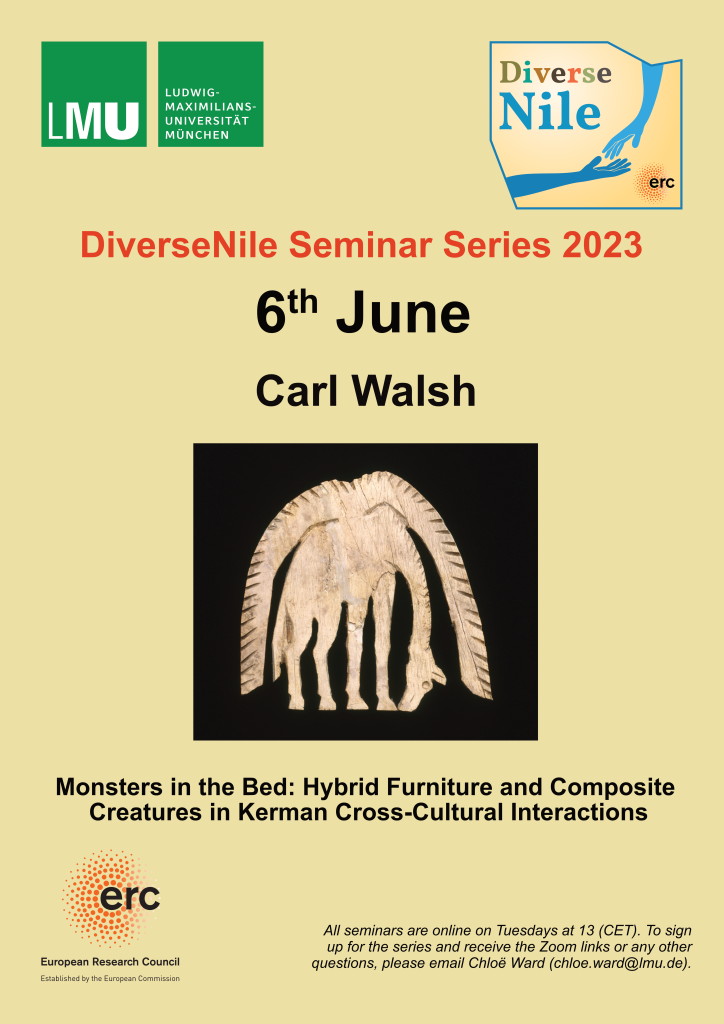It’s almost June and the next DiverseNile Seminar Series is approaching. We are delighted that the next lecture will be given by Carl Walsh on June 6. The very promising title is: “Monsters in the Bed: Hybrid Furniture and Composite Creatures in Kerman Cross-Cultural Interactions”.

Carl is an archaeologists who has received his PhD in 2016 from the University College London. He is currently a Postdoctoral Fellow at the Barnes Foundation, USA. He is an expert on the Kerma culture and has successfully placed Kerma and Nubia in his publications within wider theoretical and archaeological discussions of the eastern Mediterranean during the Bronze and Iron Ages.Carl kindly provided us with an abstract of his talk – this nicely illustrates why you really should not miss it!
The Kerma state in Upper Nubia (modern Sudan) was a major cultural, political, and economic power in northeast Africa, especially in its later phase during the Classic Kerma period (1700-1550 BCE). While originally viewed as an isolated periphery of Egypt, this kingdom is now understood as heavily interconnected with other Nile Valley and desert groups in northeast Africa—and perhaps even further afield in the Mediterranean and western Asia. This paper builds on recent approaches on Kerman cross cultural interactions through examining the evidence for Egyptian influences in furniture forms and styles during the Classic Kerma period. The distribution and forms of furniture—bedframes, beds, and stools—are examined across Kerma sites and periods and are argued to be indigenous Kerman status objects. At the start of the Classic Kerma period, however, new hybrid furniture types incorporated Egyptian furniture designs alongside fantastical imagery of composite creatures and fauna. The incorporation of these foreign styles and development of composite creatures is argued to be part of a concerted effort by the Kerman court to construct inter-regional identities through shared “international” visual vocabularies and courtly habitus. Diplomacy provided a social and embodied framework for these engagements, which connected different court and elite groups in a wider diplomatic system within northeastern Africa, the Mediterranean, and western Asia during the later second millennium BCE (Abstract by Carl Walsh).